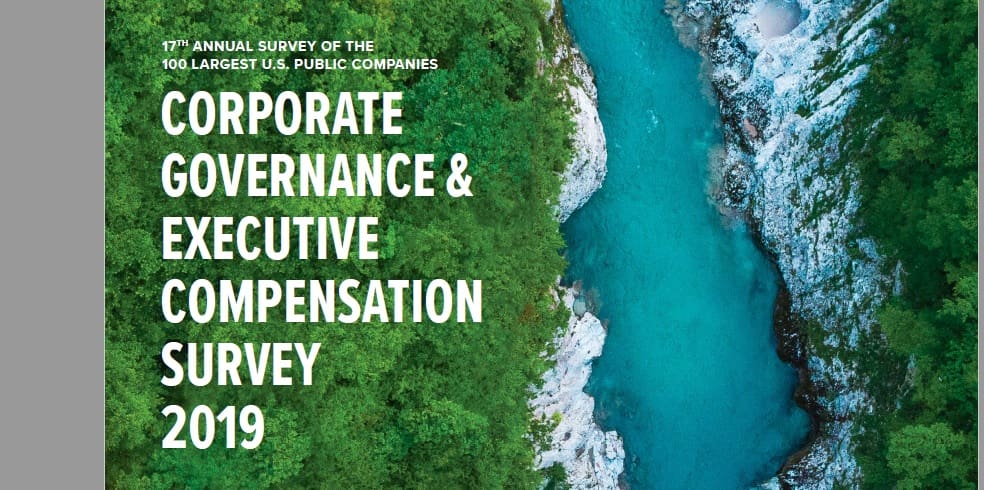Concern for environmental and social issues has reached an inflection point. While traditional governance issues that have been a staple of investor advocacy and discussion (the “G” of ESG) continue to be important, environmental and social issues (the “E” and the “S” of “ESG”) have now taken center stage. Scarcely a day passes without a new ESG development, disseminated as a statistic, an investor campaign, political initiative or action by a special interest group. In response to this change, Shearman & Sterling’s 17th annual Corporate Governance & Executive Compensation Survey closely reviews several aspects of the current ESG phenomena in addition to continuing to report on traditional governance topics. In this effort, Shearman & Sterling cover such topics as proxy access, shareholder engagement, shareholder proposals, governance practices of newly public companies, CEO pay ratio, director compensation, cybersecurity, board diversity and shareholder activism.
The topic of ESG is a complex one for companies, raising a broad range of issues. In this Survey, Shearman & Sterling strive to help companies develop their approach and framework to the issues that are relevant to them and provide insights on specific E&S issues, including human capital management, gender pay disparity, board diversity and corporate culture. Across all topics, their goal is to provide an overview of the current corporate governance landscape and identify best practices.
In addition to insightful articles, the Survey consists of a review of key governance characteristics of the
Top 100 Companies, define here as the 100 largest U.S. public, noncontrolled companies that have
equity securities listed on the NYSE or Nasdaq, measured by market capitalization and revenue. A list of the
Top 100 Companies can be found in “The Survey” section at the end of this publication. The results of the Survey
can also be found in “The Survey” section as well as in the insights articles contained elsewhere.
Fill out the form below to download your free copy of the survey.













